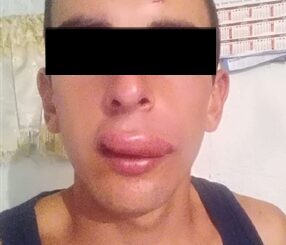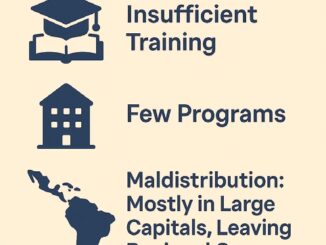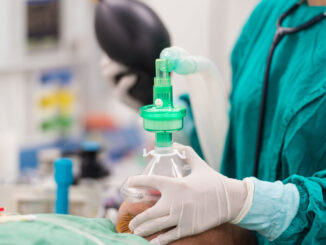Jairo Bravo MD. 1 , Marta Zúñiga MD. 2 , Yenddy Carrero PhD. 3 , Jesús Mosquera MD. 4
Recibido: 11-09-2018
Aceptado: 30-01-2019
©2019 El(los) Autor(es) – Esta publicación es Órgano oficial de la Sociedad de Anestesiología de Chile
Revista Chilena de Anestesia Vol. 48 Núm. 5 pp. 461-464|https://doi.org/10.25237/revchilanestv48n05.11
PDF|ePub|RIS
Propofol, fentanil y remifentanil no alteran la capacidad de las células polimorfonucleares humanas de fagocitar a la Candida albicans
Abstract
Objectives: The capacity of polymorphonuclear cells (PMN) to phagocyte microorganisms is an important function to be preserved during surgical interventions. Therefore, the aim of this study was to determine the effect of propofol, fentanyl and remifentanil combination on Candida albicans engulfment by human PMN. Materials and Methods: Twenty patients scheduled to undergo surgical interventions (ASA I-II) received propofol, fentanyl and remifentanil as intravenous anesthesia. PMNs were obtained before and after the surgical procedure and phagocytosis assay was performed using opsonized C. albicans. Results and Conclusions: No differences between the values obtained before and after anesthesia treatment in the number of phagocytic PMN and the number of C. albicans engulfed were observed. These results suggest that the used anesthesic protocol does not alter one of the most important immune mechanisms.
Resumen
Objetivos: La capacidad de las células polimorfonucleares (CPN) de fagocitar a los microorganismos es una importante función que se debe de preservar durante las intervenciones quirúrgicas. Por lo tanto, el propósito de este estudio fue determinar el efecto de la combinación del propofol, el fentanil y el remifentanil en la ingestión de Candida albicans por parte de las CPN humanas. Materiales y Métodos: Veinte pacientes sujetos a intervenciones quirúrgicas (ASA I-II) recibieron propofol, fentanil y remifentanil como anestesia endovenosa. Los CPN se obtuvieron antes y después del procedimiento quirúrgico y el ensayo de fagocitosis fue realizando usando C. albicans opsonizada. Resultados y Conclusiones: No se observaron diferencias significativas en los valores obtenidos antes y después del tratamiento anestésico tanto en el número de CPN fagocíticas como en el número de C. albicans dentro de las células. Estos hallazgos sugieren que el protocolo anestésico usado no altera uno de los mecanismos de defensa más importante del organismo.
-
Introduction
The capacity of polymorphonuclear cells (PMN) to engulf microorganisms plays an important role in the immune defense[1]. However, drugs that might impair their engulfing capacity can induce immunosupression[2]. Patients scheduled to undergo surgical interventions are exposed to anesthesic and analgesic drugs during this procedure that together with perioperative stress may impair PMN function and expose to infections. Propofol a GABA receptor agonist, used in intravenous anesthesia has been reported to induce alterations in PMN biology[3]. However, there are several studies that do not report suppressive effects of propofol[4]-[8]. Therefore, the aim of this study was to determine the effect of propofol on the capacity of PMNs to engulf Candida albicans.
-
Patients and Methods
Protocol
Twenty patients scheduled to have different elective surgeries (less than 3 hours in duration; ASA I and ASAII) were studied. Midazolam (0.04 mg/Kg) was used as pre-medication. Total intravenous anesthesia was induced with fentanyl (3 µg/kg), propofol (1 mg/kg) and rocuronium (0.6 µg/kg/min). Anesthesia was maintained by continuous infusion of remifentanil (0.3-0.5 µg/kg /minute) and propofol (2-8 mg/kg/hour) through the following scheme: 8 mg/kg/hour by infusion x 10 minutes, 6 mg/kg/hour by infusion x 10 minutes and finally 2-4 mg/kg/hour according to hemodynamic parameters during the rest of the intervention[9],[10]. Muscle relaxation was induced and maintained with rocuronium bromide (0.6 mg/kg and 0.15 mg/kg respectively). Blood samples were obtained before anesthesia induction and immediately after surgical procedure. This study was approved by research ethics committees of all the involved institutions on the basis of the Declaration of Helsinki, and written informed consent were obtained from all patients.
PMN isolation
Peripheral venous blood was collected in heparin-coated tubes from 20 individuals during pre and post surgical intervention. Peripheral blood was diluted 1:2 in sterile PBS. Histopaque-1119 (Sigma, Aldrich, St. Louis, MO, USA) was added to a conical tube and carefully overlaid with the same volume of Histopaque-1077 (Sigma, Aldrich, St. Louis, MO, USA) to create a double-density gradient. An equal volume of diluted blood was carefully layered on top of the upper Histopaque gradient, and tubes were centrifuged at 2,400 rpm for 30 min at room temperature to allow for separation of mononuclear cells and PMNs from erythrocytes. Serum and mononuclear cell layers were aspirated and discarded, and the PMN layer was then washed in PBS, resuspended at 2 x 106/ml and used immediately in phagocytosis assays.
Candida albicans culture
The strain of C. albicans 572 (American Type Culture Collection. Manassas, VA, USA) was used as a reagent for phagocytosis tests in vitro. C. albicans was incubated in tryptic soy broth at 37º C for 24 h. Thereafter, cells were incubated in a medium dextrose agar on sterile Petri dishes at 37 ºC for 24 h. At the end of the incubation and growth period, cells were harvested with phosphate buffered saline (PBS) at pH 7.2 and centrifuged at 3,000 rpm per 15 min. Cellular package was then fixed with 2% paraformaldehyde-PBS solution at room temperature for 20 h. After washing with PBS cells were suspended in PBS at 5 x109 cells/ml (540 nm; Spectronic 20, Thomas Scientific, High Hill Road, Swedesboro, NJ, USA). The suspension of the yeast was stored at 4° C in aliquots of 3 ml in sterile Eppendorf tubes. Subsequently, cells were opsonized by incubation with human serum pool (AB) at 37ºC for 40 min.
Phagocytosis assay
Phagocytosis was performed by incubating 0.5 ml of opsonized C. albicans suspension (5 x109/ml) with 0.5 ml of the PMN suspension (2 x106/ml) at 37º C per 1 hour. Cells were washed in PBS three times, stained with hematoxylin-eosin and mounted on glass slides with xilene. The number of phagocyting cells and the number of C. albicans engulfed by each individual cell were detected. At least 100 PMNs were counted for each experimental point.
Statistical analysis
Mean values and standard deviations were calculated. Paired t test was used to determine statistical significance. The level of significance was established at p < 0.05.
-
Results
Table 1 shows patient age and gender characteristics. The number of C. albicans phagocytic cells in anesthesia treated patients did not differ from that of the controls (Pre-anesthesia). Similarly, the drug did not affect the number of C. albicans per PMN (p = 0,637). No significant differences were observed according to surgical pathologies.
| Table 1. Gender and age characteristics of patients | ||
|
Patients |
Cases (%) | Age (years) |
|
Women |
15 (75) | 42.19 ± 4.15 |
|
Men |
5 (25) | 49.11± 6.59 |
-
Discussion
Clinical and experimental studies have reported that anesthetic agents have diverse effects on the immune system[2]. In general, anesthetics induce immunosuppression. The use of anesthetic agents is dependent on the immune status of the patients[7]. In this study, phagocytic activity of PMN (important cell during acute inflammation) was not affected by anesthesia treatment during surgical intervention, suggesting a safe drugs for this procedure. Contradictory reports show that propofol (a GABA receptor agonist), can impair several monocyte and neutrophil functions, including phagocytosis[3]. However, some authors have showed that the inhibitory properties on human neutrophils of propofol are related to its lipid carrier vehicle[7]. In addition, no suppressor effects of propofol have been previously reported. In this regard, propofol did not alter phagocytic activity of PMN from bronchoalveolar lavage fluid[4] or monocytes from peripheral blood[5]. Propofol exhibited no significant effects on neutrophil function and immune status in patients with severe brain injury[6] and the suppressing effects of propofol were not observed in lymphocyte from endotoxin treated individuals[7],[8]. In addition to propofol, midazolam, fentanyl and remifentanil were also used in this study. Contradictory immunosupressor effects of midazolam have been reported. Nonetheless, midazolam infusion did not affect cytokine production in septic patients[11] and propofol and midazolam do not affect phagocytosis of Staph Aureus by neutrophils[12]. The effect of fentanyl and remifentanil is linked to the hypothalamic-pituitary-adrenal (HPA) axis and peripheral mechanisms mediated by muopioid receptors on immune cells[13]. The interaction of opioids with the HPA axis is complex, species and time dependent, with different effects after acute or chronic administration. During acute administration no change in ACTH or glucocorticoids have been reported[7],[14]. In addition, fentanyl did not affect the production of superoxide by PMNs and the number of circulating B- and T-lymphocytes remained unchanged in healthy volunteers[7],[15]. Once neuthophils have migrated through tissues towards sites of infection, neutrophils carry out their primary role-killing infecting microbes by performing phagocytosis, which induces reactive oxygen species, type I interferon, NFB activation of proinflammatory cytokines, and the mitogen-activated protein kinase cascade[16]. In this study only was analyzed the phagocytic event remaining the internal cellular activation to be studied. Taken together, this information address the possibility that under the conditions of this study, those drugs have low or no effect on PMN phagocytosis. In conclusion the combination of propofol, fentanyl and remifentanil as intravenous anesthesia may be beneficial during the surgical interventions, since phagocytosis function of PMN is preserved. Further investigation in patients with ASA III and IV classifications is required.
Acknowledgments: We thank to MgSc. Victor Chacín (†) for technical assistance.
References
1. Friedman H, Newton C, Klein TW. Microbial infections, immunomodulation, and drugs of abuse. Clin Microbiol Rev. 2003 Apr;16(2):209–19. https://doi.org/10.1128/CMR.16.2.209-219.2003 PMID:12692094
2. Kurosawa S, Kato M. Anesthetics, immune cells, and immune responses. J Anesth. 2008;22(3):263–77. https://doi.org/10.1007/s00540-008-0626-2 PMID:18685933
3. Mikawa K, Akamatsu H, Nishina K, Shiga M, Maekawa N, Obara H, et al. Propofol inhibits human neutrophil functions. Anesth Analg. 1998 Sep;87(3):695–700. PMID:9728856
4. Erol A, Reisli R, Reisli I, Kara R, Otelcioglu S. Effects of desflurane, sevoflurane and propofol on phagocytosis and respiratory burst activity of human polymorphonuclear leucocytes in bronchoalveolar lavage. Eur J Anaesthesiol. 2009 Feb;26(2):150–4. https://doi.org/10.1097/EJA.0b013e328319bfeb PMID:19142090
5. Ploppa A, Kiefer RT, Nohé B, Haeberle HA, Dieterich HJ, Unertl KE, et al. Monocyte phagocytosis of viable Staphylococcus aureus is impaired by barbiturates, but not by propofol. Infection. 2008 Jun;36(3):220–5. https://doi.org/10.1007/s15010-007-7240-3 PMID:18454339
6. Huettemann E, Jung A, Vogelsang H, Hout N, Sakka SG. Effects of propofol vs methohexital on neutrophil function and immune status in critically ill patients. J Anesth. 2006;20(2):86–91. https://doi.org/10.1007/s00540-005-0377-2 PMID:16633763
7. Schneemilch CE, Schilling T, Bank U. Effects of general anaesthesia on inflammation. Best Pract Res Clin Anaesthesiol. 2004 Sep;18(3):493–507. https://doi.org/10.1016/j.bpa.2004.01.002 PMID:15212341
8. Hoff G, Bauer I, Larsen B, Bauer M. Modulation of endotoxin-stimulated TNF-alpha gene expression by ketamine and propofol in cultured human whole blood. Anaesthesist. 2001 Jul;50(7):494–9. https://doi.org/10.1007/s001010100149 PMID:11496686
9. Hans P, Deby-Dupont G, Deby C, Pieron F, Verbesselt R, Franssen C, et al. Increase in antioxidant capacity of plasma during propofol anesthesia. J Neurosurg Anesthesiol. 1997 Jul;9(3):234–6. https://doi.org/10.1097/00008506-199707000-00006 PMID:9239585
10. Allaouchiche B, Debon R, Goudable J, Chassard D, Duflo F. Oxidative stress status during exposure to propofol, sevoflurane and desflurane. Anesth Analg. 2001 Oct;93(4):981–5. https://doi.org/10.1097/00000539-200110000-00036 PMID:11574369
11. Memiş D, Hekimoğlu S, Vatan I, Yandim T, Yüksel M, Süt N. Effects of midazolam and dexmedetomidine on inflammatory responses and gastric intramucosal pH to sepsis, in critically ill patients. Br J Anaesth. 2007 Apr;98(4):550–2. https://doi.org/10.1093/bja/aem017 PMID:17363413
12. Jensen AG, Dahlgren C, Eintrei C. Propofol decreases random and chemotactic stimulated locomotion of human neutrophils in vitro. Br J Anaesth. 1993 Jan;70(1):99–100. https://doi.org/10.1093/bja/70.1.99 PMID:8431346
13. Al-Hashimi M, Scott SW, Thompson JP, Lambert DG. Opioids and immune modulation: more questions than answers. Br J Anaesth. 2013 Jul;111(1):80–8. https://doi.org/10.1093/bja/aet153 PMID:23794649
14. Rittner HL, Brack A, Machelska H, Mousa SA, Bauer M, Schäfer M, et al. Opioid peptide-expressing leukocytes: identification, recruitment, and simultaneously increasing inhibition of inflammatory pain. Anesthesiology. 2001 Aug;95(2):500–8. https://doi.org/10.1097/00000542-200108000-00036 PMID:11506126
15. Jacobs R, Karst M, Scheinichen D, Bevilacqua C, Schneider U, Heine J, et al. Effects of fentanyl on cellular immune functions in man. Int J Immunopharmacol. 1999 Jul;21(7):445–54. https://doi.org/10.1016/S0192-0561(99)00025-9 PMID:10454018
16. Krakauer T. Inflammasomes, Autophagy, and Cell Death: The Trinity of Innate Host Defense against Intracellular Bacteria. Mediators Inflamm. 2019 Jan;2019:2471215. https://doi.org/10.1155/2019/2471215 PMID:30728749

 ORCID
ORCID

